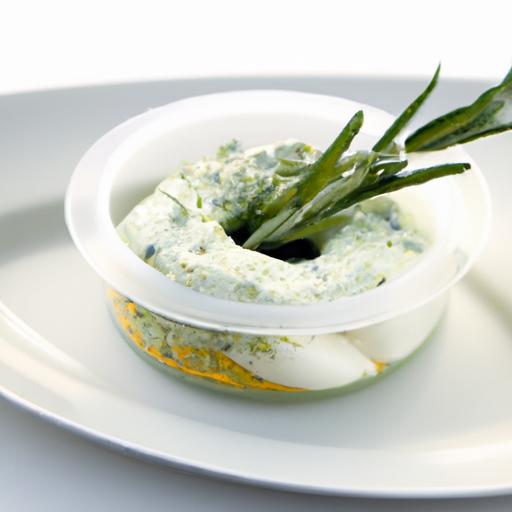Imagine transforming a simple spoonful of creamy yogurt into an endless chain of homemade batches, each brimming with tangy, probiotic goodness. The magic behind this culinary alchemy lies in the humble yogurt starter-a living culture of bacteria that sets fermentation into motion. But here’s the question puzzling many home fermenters and dairy lovers: can you reuse yogurt starter without sacrificing flavor or texture? In this article, we will unlock the secrets of fermentation, exploring the science, art, and practical tips behind reusing your yogurt starter. Get ready to dive into a world where a little culture goes a long way, sustainably and deliciously.
Can You Reuse Yogurt Starter? Absolutely-and doing so unlocks a fascinating journey into the art and science of fermentation. Harnessing the power of live cultures from your previous batch not only creates a charming cycle of deliciousness but also deepens your understanding of these microscopic allies that transform simple milk into creamy, tangy yogurt. This method fosters a sustainable kitchen ritual while inviting you to master the delicate balance of temperature, timing, and microbial vitality that dictates your yogurt’s final flavor and texture.
Prep and Cook Time
- Preparation: 10 minutes
- Fermentation: 6 to 12 hours (depending on desired tartness)
- Total Time: 6 to 12 hours and 10 minutes
Yield
Approximately 4 cups (1 quart) of homemade yogurt
Difficulty Level
Medium – Requires attention to detail but rewarding for all skill levels
Ingredients
- 1 quart whole milk (or substitute with 2% for lighter yogurt)
- 2 tablespoons active yogurt starter (plain, live culture yogurt from previous batch or store-bought)
- Optional: 1 teaspoon powdered milk (to increase creaminess and firmness)
Instructions
- Heat the milk gently: Pour the milk into a heavy-bottomed saucepan and warm it over medium heat until it reaches 180°F (82°C). This step denatures proteins, essential for creating a creamy texture. Stir occasionally to prevent scorching.
- Cool the milk: Remove from heat and allow the milk to cool to 110°F-115°F (43°C-46°C), the perfect temperature range to awaken and sustain your yogurt cultures.
- Prepare your starter culture: In a small bowl, combine 2 tablespoons of your reserved yogurt starter with a few tablespoons of the cooled milk. Whisk gently until smooth and fully incorporated. This “tempering” ensures an even distribution of cultures without lumps.
- Combine starter with milk: Pour the starter mixture back into the cooled milk, stirring gently but thoroughly to distribute the live cultures evenly.
- Incubate for fermentation: Transfer the mixture into a clean glass or ceramic container. Cover it loosely with a lid or a clean kitchen towel. Keep the container in a warm environment-ideally between 105°F and 115°F (40°C to 46°C)-for 6 to 12 hours, depending on your preferred tartness and thickness. An oven with just the light on or a yogurt maker works beautifully.
- Check for consistency: After 6 hours, gently tilt or stir a spoon to check texture development. For thicker yogurt, extend incubation, remembering that longer fermentation results in tangier flavor.
- Refrigerate: Once fermented, cover the container tightly and chill the yogurt in the refrigerator for at least 3 hours to thicken further and enhance flavor.
- Reserve starter for reuse: Save 2 tablespoons from this batch as your starter for the next time you make yogurt. Store it in a clean container refrigerated for up to two weeks.
Tips for Success When Reusing Your Yogurt Starter
- Use only fresh, active yogurt starter with live cultures-avoid flavored or expired yogurt to ensure vitality.
- Maintain a consistent incubation temperature. Fluctuating or low heat can hinder bacterial growth.
- If your starter begins to lose efficacy after 3-4 uses, refresh it by introducing a new commercial starter culture.
- Always use sterile utensils and containers to prevent contamination with unwanted microbes.
- For thicker yogurt, add 1 teaspoon of powdered milk or strain the finished yogurt through cheesecloth.
Serving Suggestions
Enjoy your homemade yogurt chilled with a drizzle of local honey, a scatter of toasted nuts, and freshly sliced seasonal fruits such as berries or stone fruits. For savory options, try stirring in fresh herbs, lemon zest, or a pinch of smoked paprika and serve it as a dip with warm pita or vegetable sticks. Its creamy, velvety texture paired with your chosen garnishes turns every spoonful into a delightful sensory experience.
| Nutrient | Per 1 cup (245g) |
|---|---|
| Calories | 150 |
| Protein | 8 g |
| Carbohydrates | 12 g |
| Fat | 8 g |
Discover more on mastering fermentation by visiting our comprehensive guide on Homemade Fermented Foods. For an in-depth scientific background on yogurt bacteria and their health benefits, check the authoritative resources at NCBI National Library of Medicine.

By mastering the nuances of how to reuse yogurt starter, you invite a blend of culinary adventure and microbiological magic into your kitchen. Celebrate each batch as a tradition that grows richer and more flavorful, nurtured by the very cultures you cultivate with patience and care.
Q&A
Q&A: Can You Reuse Yogurt Starter? Unlocking Fermentation Secrets
Q1: What exactly is a yogurt starter?
A yogurt starter is the magical blend of live bacterial cultures-primarily Lactobacillus bulgaricus and Streptococcus thermophilus-that kickstarts the transformation of milk into creamy, tangy yogurt. These microbes ferment lactose, the milk sugar, producing lactic acid which thickens the milk and gives yogurt its signature taste.
Q2: Can you really reuse yogurt starter to make more yogurt?
Absolutely! The beauty of yogurt-making lies in its cyclical nature. A spoonful of freshly made yogurt loaded with live cultures can serve as a starter for your next batch. This creates a delicious chain of homemade yogurts, each batch nurturing the next like a microbial baton.
Q3: How many times can you reuse the same yogurt starter?
While you can reuse yogurt starter multiple times, the effectiveness diminishes over successive batches. Typically, reusing the same starter 3-5 times yields good results. Beyond that, the bacterial vigor wanes, and you might notice thinner texture or altered flavor, signaling it’s time to refresh your starter with some store-bought live culture yogurt.
Q4: Does reusing yogurt starter affect flavor or texture?
Yes, subtle changes can occur. Over repeated fermentations, certain bacteria may dominate while others fade, slightly shifting the balance of acidity and texture. You might find your yogurt getting tangier or less creamy. These quirks, however, let you experiment and tailor your yogurt to your preference.
Q5: How should you store yogurt starter between uses?
To keep your starter cultures happy, store a small portion of homemade yogurt in the refrigerator at about 4°C (39°F). Use it within a week for best results. For longer storage, freezing the starter can preserve the cultures, but may affect texture when thawed.
Q6: Are there any tips to ensure successful reuse of yogurt starter?
- Use fresh, high-quality milk to feed your starter.
- Maintain proper incubation temperature (around 40-45°C or 104-113°F) for consistent fermentation.
- Avoid contamination by using clean utensils and containers.
- Taste periodically; if the flavor is off or the culture fails to thicken, start with fresh starter.
Q7: What’s the big secret behind reusing yogurt starter?
The secret lies in nurturing a living community of bacteria that thrive in your kitchen’s ecosystem. Each time you reuse starter, you’re essentially cultivating a unique microbial signature-your own yogurt fingerprint! This continuous fermentation dance is a delicious testament to the ancient art and science of transforming milk into yogurt.
Q8: Can you reuse yogurt starter from any type of yogurt?
It’s best to reuse starter from plain yogurt that contains live and active cultures. Avoid flavored or fruit yogurts as they often contain additives, sweeteners, or preservatives that can hinder the fermentation process.
Unlocking the secrets of yogurt fermentation not only saves money and waste but connects you to a timeless culinary tradition-turning humble milk into vibrant, living culture, again and again. So yes, you can reuse yogurt starter, and with a little love and care, your homemade yogurt journey can become infinitely delicious!
Future Outlook
As you embark on your homemade yogurt journey, embracing the art of fermentation reveals more than just creamy delights-it unlocks a science steeped in culture and care. Reusing your yogurt starter isn’t just a practical tip; it’s a connection to a timeless tradition of nurturing beneficial microbes and savoring their evolving flavors. So next time you stir that velvety batch, remember: each spoonful carries the secret history of countless fermentations before it, ready to be passed on and reimagined. Happy culturing!


